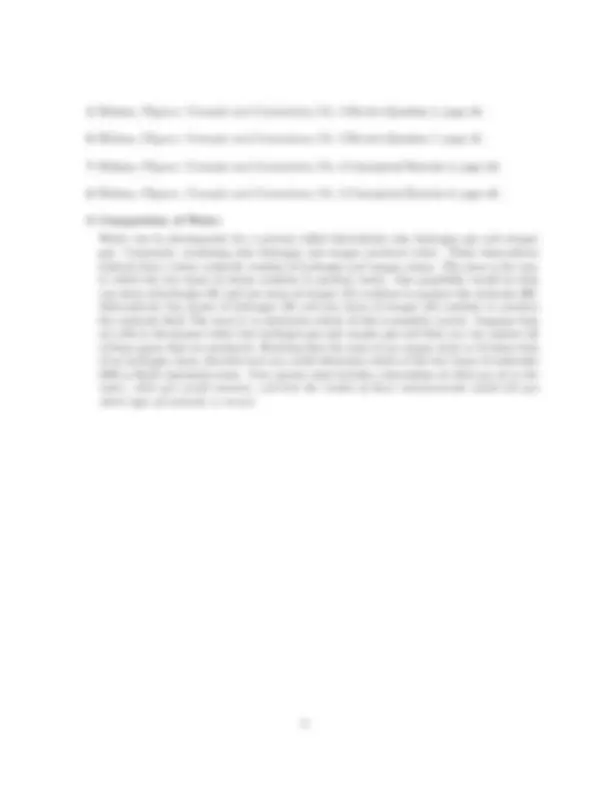



Study with the several resources on Docsity

Earn points by helping other students or get them with a premium plan


Prepare for your exams
Study with the several resources on Docsity

Earn points to download
Earn points by helping other students or get them with a premium plan
Community
Ask the community for help and clear up your study doubts
Discover the best universities in your country according to Docsity users
Free resources
Download our free guides on studying techniques, anxiety management strategies, and thesis advice from Docsity tutors
Information about two homework assignments from a physics 100 course in spring 2009. The first assignment asks students to compare ancient greek and copernican notions of planetary orbits using saturn as an example, and to determine which evidence supports copernicus' theory. The second assignment asks students to determine the composition of a water molecule through electrolysis and mass measurements.
Typology: Assignments
1 / 2

This page cannot be seen from the preview
Don't miss anything!


Phys 100 Spring 2009
Due: 28 January 2009
1 Hobson, Physics: Concepts and Connections, Ch. 1 Conceptual Exercises 3, page 27.
2 Hobson, Physics: Concepts and Connections, Ch. 1 Conceptual Exercises 4, page 28. A complete solution includes a description of which feature of a planet you observe, what the results of this observation could be, and how these results support or disprove the possibility of simple circular motion.
3 Hobson, Physics: Concepts and Connections, Ch. 1 Conceptual Exercises 8, page 28.
4 Indirect vs. direct evidence for circular planetary motion.
Consider the motion of the planet Saturn. How do we know that it moves in a nearly circular orbit around the sun rather than about the earth? A direct method for doing this would be to observe the position of Saturn, the Earth and the Sun from a distance during one entire orbit of Saturn. This would require observing the three from a space probe at a significant distance from the Sun. The only candidates for this are the Voyager and Pioneer planetary space probes which reached suitable distances from the sun in the late 1990’s. Suppose that these were used to photograph Saturn, the Earth and the Sun, once per week and that these photographs were played back as a movie.
a) Sketch the paths of Saturn, the Earth and the Sun according to the ancient Greek notions of the solar system. b) Sketch the paths of Saturn, the Earth and the Sun according to Copernicus’ notion of the solar system. c) Look up the time taken for Saturn to complete one orbit (a “Saturn year” or the “orbital period”) and write this down together with the source of your information. What portion of Saturn’s orbit could the probes conceivably have observed? Could a hypothetical movie produced by these probes be used to support either the ancient Greek notions or those of Copernicus?
A movie of this type could be regarded as “direct” evidence for Copernicus’ notion of the solar system. Such observations were not actually done by these or any other space probes. In fact, the orbits of the planets needed to be known in advance so that the probes could approach various planets closely (they did this successfully).
d) Based on discussions in the class and the text describe evidence for the paths of Saturn, the Earth and the Sun according to Copernicus’ notion of the solar system. Would you consider this as “direct” or “indirect” evidence (i.e. does the evidence actually show the paths of the planets or do you have to deduce the possible path from the evidence?
5 Hobson, Physics: Concepts and Connections, Ch. 2 Review Question 2, page 48.
6 Hobson, Physics: Concepts and Connections, Ch. 2 Review Question 7, page 48.
7 Hobson, Physics: Concepts and Connections, Ch. 2 Conceptual Exercise 2, page 49.
8 Hobson, Physics: Concepts and Connections, Ch. 2 Conceptual Exercise 6, page 49.
9 Composition of Water
Water can be decomposed (by a process called electrolysis) into hydrogen gas and oxygen gas. Conversely, combining only hydrogen and oxygen produces water. These observations indicate that a water molecule consists of hydrogen and oxygen atoms. The issue is the way in which the two types of atoms combine to produce water. One possibility would be that one atom of hydrogen (H) and one atom of oxygen (O) combine to produce the molecule HO. Alternatively two atoms of hydrogen (H) and one atom of oxygen (O) combine to produce the molecule H 2 O. The issue is to determine which of this is possibly correct. Suppose that are able to decompose water into hydrogen gas and oxygen gas and that you can capture all of these gases that are produced. Knowing that the mass of an oxygen atom is 16 times that of an hydrogen atom, describe how you could determine which of the two types of molecules (HO or H 2 O) represents water. Your answer must include a description of what you do to the water, what you would measure, and how the results of these measurements would tell you which type of molecule is correct.